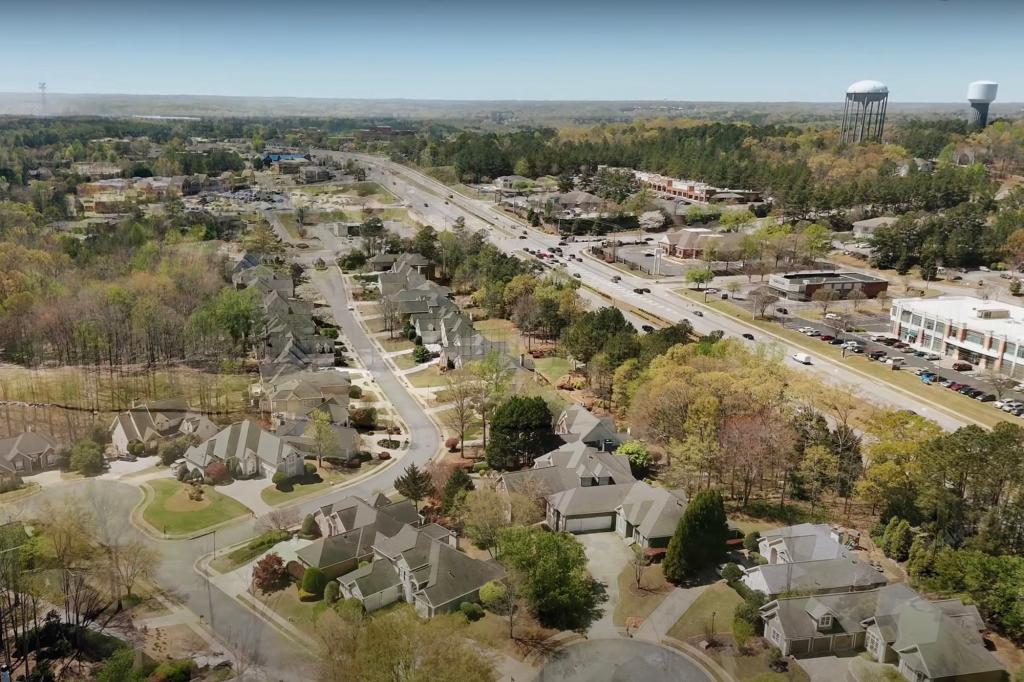America’s Fastest-Growing Affordable Suburbs: A Housing Migration Story
As the median house price in New York approaches the staggering $600,000 mark, many New Yorkers are joining a nationwide migration trend toward more affordable housing markets. This shift reflects a broader American story of people seeking financial breathing room without sacrificing quality of life. GOBankingRates recently released an eye-opening study titled “America’s Fastest-Growing Suburbs With Home Values Under $500K in 2025,” based on comprehensive data from Zillow’s Home Value Index and US Census information from 2021 and 2023. The findings paint a clear picture of where Americans are finding housing affordability combined with growing communities and desirable amenities.
Leading this migration revolution is Stockbridge, Georgia, a thriving Atlanta suburb that has witnessed a remarkable population surge of 6,908 residents in just two years—a 24.18% increase that earned it the title of America’s fastest-growing affordable suburb. What makes Stockbridge particularly attractive is its combination of accessibility and affordability: homes average $303,705, less than half the median price in many Northeast and West Coast cities, while downtown Atlanta remains just a convenient 35-minute drive away. Beyond economic considerations, Stockbridge offers residents a connection to nature through nearby Panola Mountain State Park, demonstrating that these growing communities provide more than just housing affordability—they offer a holistic lifestyle package that increasingly appeals to transplants from more expensive regions.
The South and Southwest dominate this affordable housing boom, with Texas standing out as the undisputed epicenter of the movement. An impressive 13 Texas locations made GOBankingRates’ top 50 list, including Tascocita (a Houston suburb) in second place and Kyle (an Austin suburb) in third. Kyle exemplifies the perfect storm of factors driving this migration: despite Austin’s skyrocketing real estate market over the past decade, Kyle maintains an average home value of just $323,917, making it one of the most accessible entry points to the booming Austin metropolitan area. This Texas prominence reflects a profound realignment in American housing preferences, as residents from costly coastal regions increasingly view the Lone Star State as offering the optimal balance of economic opportunity, housing affordability, and quality of life.
This migration pattern extends beyond Texas to encompass much of the southern United States, with Florida, Arizona, North Carolina, and Tennessee all featuring prominently on the list. The consistent thread connecting these locations is their ability to offer housing significantly below the $500,000 threshold while providing proximity to growing job markets, cultural amenities, and natural beauty. For families and individuals feeling financially squeezed in traditional high-cost areas like New York, California, or Massachusetts, these emerging suburbs represent not just affordable housing but a chance to build wealth through homeownership—a cornerstone of the American Dream that has become increasingly elusive in many established metropolitan areas.
Perhaps most interesting is how this migration trend reaches beyond the traditional Sun Belt to include midwestern locations like Westfield, Indiana. This Indianapolis suburb has experienced a significant population surge, drawing new residents with an average home value of $482,509—still under the study’s $500,000 threshold but illustrating how relative affordability varies by region. Westfield’s inclusion highlights an important nuance in this migration story: while absolute price points matter, equally important is what those dollars can purchase in terms of square footage, property features, and community amenities. Many migrants from coastal areas find they can dramatically upgrade their living situations—trading a small apartment for a spacious single-family home with a yard, for instance—even when moving to suburbs where prices are rising but remain below the half-million mark.
This great American housing migration represents more than just a response to price disparities—it reflects changing priorities in the post-pandemic era. Remote work flexibility has freed many Americans to prioritize housing affordability and quality of life over proximity to traditional job centers. Communities like Stockbridge, Kyle, and Westfield are benefiting from this shift, welcoming waves of new residents who bring diversity, economic activity, and fresh perspectives. While challenges certainly accompany such rapid growth, including infrastructure demands and potential cultural tensions, these fastest-growing affordable suburbs embody a quintessentially American story of reinvention and opportunity. As coastal housing markets continue their seemingly unstoppable climb toward unaffordability, these emerging communities may increasingly represent not just America’s housing future but the evolving geography of the American Dream itself.


